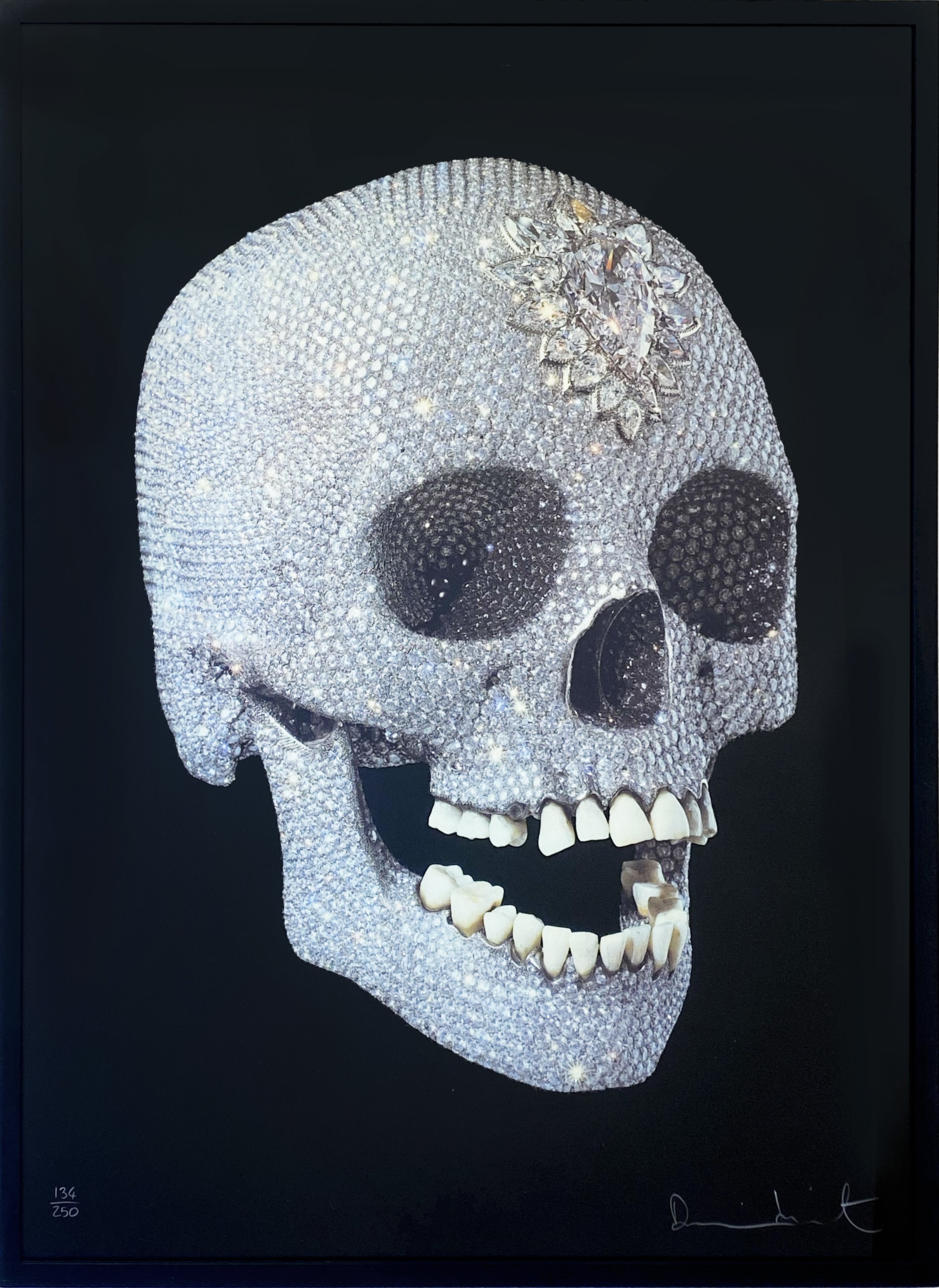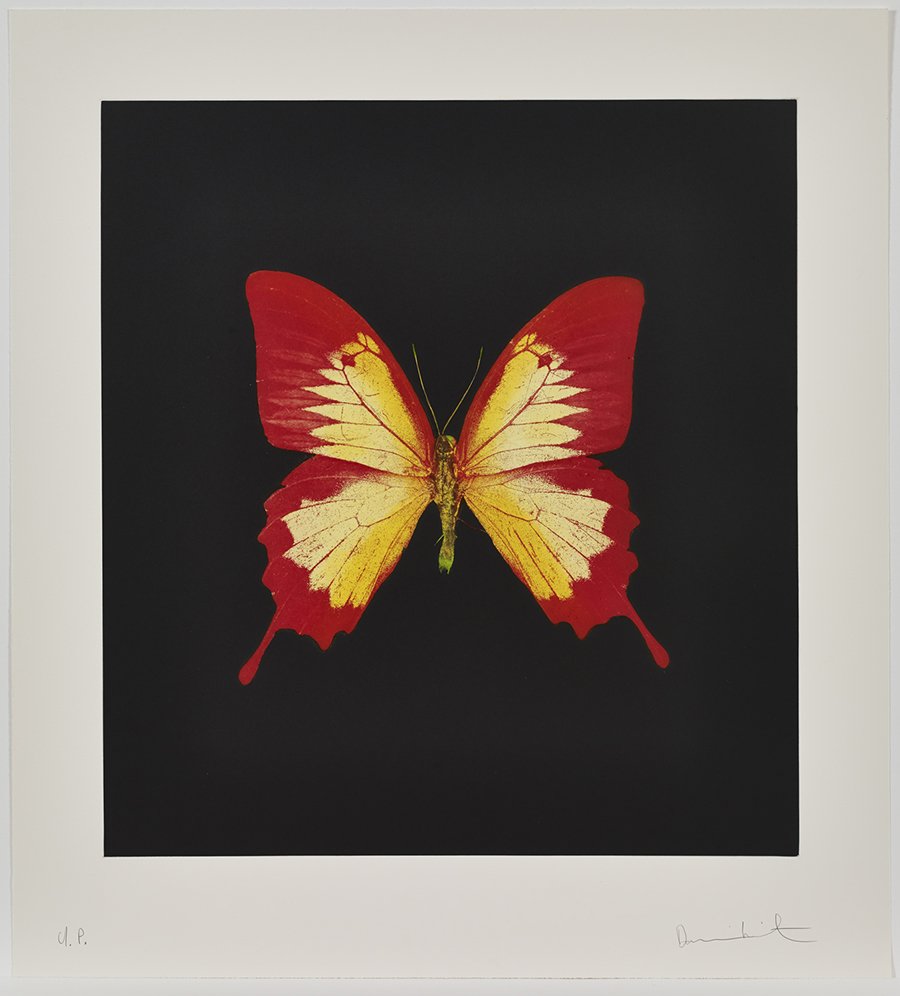Tetrahydrocannabinol
Details
Edition
AP, edition of 115
Medium
Etching
Signature
Pencil signed
Unframed Dimensions
79 X 44 inches
200.66 X 111.76 cm
Framed Dimensions
85 X 50 inches
215.90 X 127.00 cm
Series
Spots
Year
2004
More from this artist
About the artist
Damien Hirst is a contemporary British artist who explores the relationship between art, commerciality and money in his diverse works of art. He was born in Bristol, England in 1965. While a student at Goldsmith’s College, he organized and curated a student exhibition titled “Freeze” in 1988. The participants of this cutting edge show became the Young British Artists, who largely defined and dominated the contemporary art scene in London during the 1990’s., At the exhibition, Charles Saatchi, a prominent contemporary art collector and co-founder of the London advertising agency Saatchi and Saatchi, became impressed with Hirst’s work and began collecting it, initiating Hirst’s commercial success in the art world. In 1991, three years after “Freeze,” Hirst had his first solo exhibition at the Woodstock Street Gallery, which featured monochrome canvases and live tropical butterflies. In 1992, Hirst was an integral part of the Young British Artists exhibition at the Saatchi Gallery, where the group shocked the public with their independent and irreverent attitude, entrepreneurial spirit, and utilization of the media for their own means and promotion.
Hirst works in a variety of media, but is most famous for his paintings, medicine cabinet sculptures, and glass tank installations. The Physical Impossibility of Death in the Mind of Someone Living, a piece featuring a tiger shark contained in a glass tank of formaldehyde, had a wildly successful debut at the Saatchi Gallery, and further prompted Hirst to use animals enclosed in formaldehyde to explore themes of the natural versus the commercial, preservation and suspension in time and space.
Like Warhol and Jeff Koons before him, Hirst is interested in the consumption and commerciality of art, as well as the monetary scale on which art is judged and purchased. This exploration of money and consumption is most apparent in For the Love of God, a human skull constructed of platinum and covered in 1,106.18 carats of diamonds. Hirst also utilizes diamonds in his medicine cabinet pieces which feature gold shelves populated with the precious stones.
His paintings, which he creates in two varying styles, are thematically linked with mass production and consumer culture. In his first style of painting, Hirst creates an arrangement of same sized colored dots and sets them against a plain background, often titling them in reference to pharmaceutical chemicals. In his second group of paintings he uses centrifugal force to create an image by placing canvases on a spinner and pouring paint on them as they move. In creating his paintings, Hirst heavily relies upon assistants, employing a similar factory-like mode of production as Andy Warhol did during his time. Also like Warhol, Hirst blurs the line between artist and celebrity and utilizes the media for the promotion of his art. In only a few decades, Hirst has become the richest living artist, with his pieces highly sought after internationally and selling at exceedingly high prices at auctions.





























